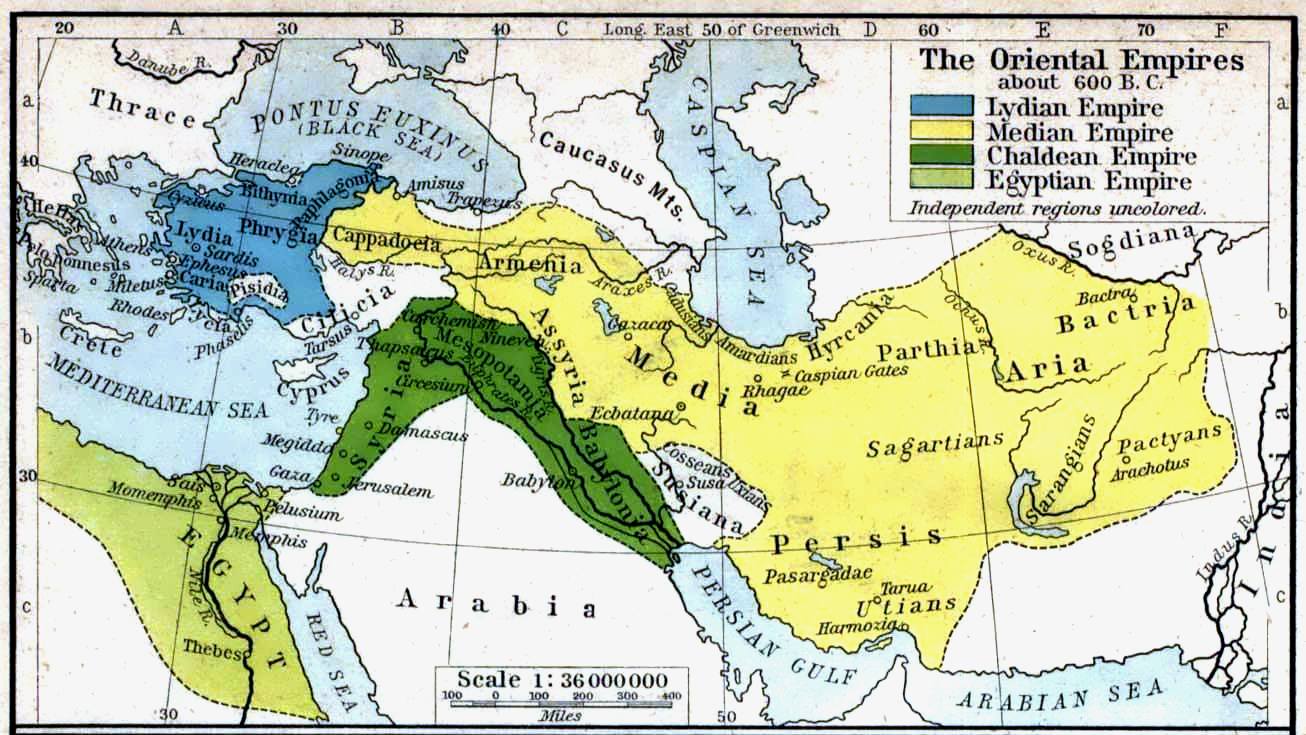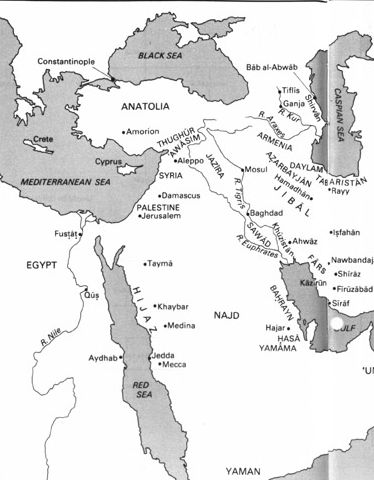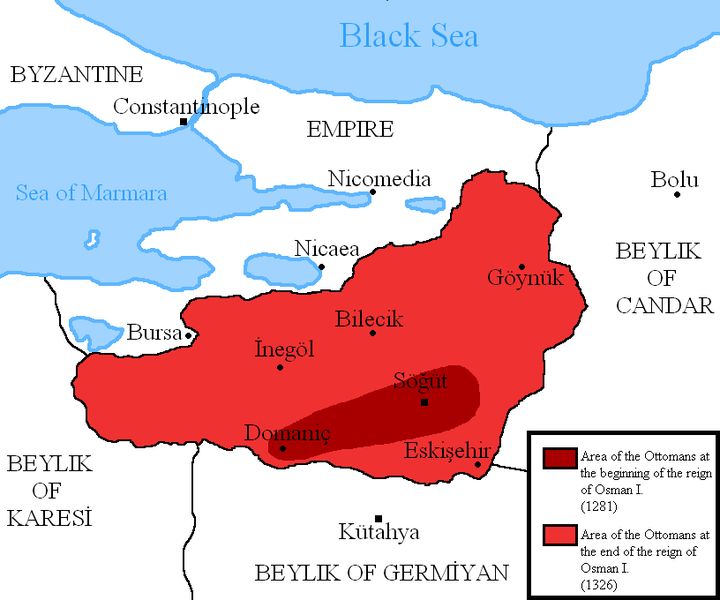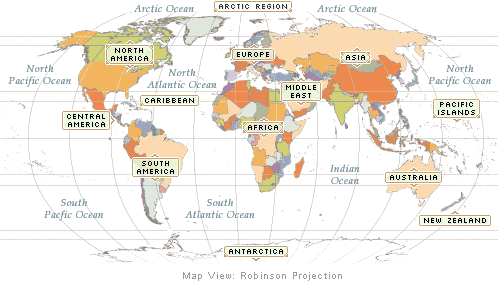
From: Stephen Williamson
Originally Sent: Thursday, November 01, 2012 8:47 AM. Updated in 2023.
Subject: A Brief History with hyperlinks
Initially based on Daniel 2
See too History of Greece History of Israel
532 BC Nineveh, capital of Assyria, falls to Nabopolassar, King of Babylon. Nabopolassar reigned a further eight years before abdicating the throne in favour of his son, Nebuchadnezzar. Nabopolassar died shortly after.
Click here for a reconciliation of the 80 years difference between the fall of Nineveh in 532 BC, which aligns with scripture, and the year 612 BC recorded in Greek history based on a somewhat "mysterious" historian named Herodotus.
Babylon's reign, mostly through the Crown Prince and King Nebuchadnezzar, his son Evil-Merodach, and his grandson Belshazzar.

The Oxus River is today known as the Amu Darya (or Amu River) forming a border between Afghanistan to the south and Tajikistan Sogdiana to the north.
The Ochus River (known to the Romans as the Arius) is today known as the Hari River on which the city of Herat in western Afghanistan is located.
Click here to view this map of Media-Persia with latitude and longitude side by side with a modern map of Iran
465 BC Darius the Mede and Cyrus the Persian took Babylon on the night of Daniel's prophecy, see Daniel 5.
In 453 BC, after defeating Croesus in Lydia, Cyrus defeated Nabonidus (father of that last king Belshazzar) in open battle. It is called first year of his reign, Darius the Mede has no more mention, and Cyrus commanded the Jews to go free. Rebuild the Lord's house. See Ezra 1
In Jewish history recorded by Josephus in the 1st century AD, Persia's reign occurred through Cyrus, Cambyses (called Artaxerxes in Ezra), Darius, Artaxerxes, and Artaxerxes II (called Ahasuerus in Esther).
Click here for further background to these four Persian kings that followed Cyrus the Great.
430 BC Battle of Marathon holding off the Median Navy under Darius. "Median" is the name used by Thucydides.
420 BC According to Thucydides, Battle of Salamis came ten years later and Themistocles, the Greek commander sent Xerxes back to Persia "tail between his legs", according to the Greeks. It was followed by the Second Peloponnesian War (between Athens and Sparta), initially led by Pericles on behalf of Athens.
388 BC (approximately) Following this war with the Spartans came the Battle of Thermopylae, as recorded by Herodotus, where 300 Spartans were able to hold off hordes of invaders financed by Persia. However the armies broke through and took Athens. The King's Peace followed, as set out by Artaxerxes II (husband of Esther) in Susa, placing Sparta in charge of much of Greece.
331 BC Alexander the Great (from Macedonia), with his father Philip having unified Greece, now defeated Persia. But he died young, also his children, and his kingdom divided into four, with the north and east ruled by Alexander's infantry general Seleucus. One of Alexander's closer generals and companions, Ptolemy in Egypt (Alexandria) ruled initially over Jerusalem from the south, then Seleucus's empire in Syria (Antioch) ruled over Jerusalem from the north, following the Greek customs.
247 BC During this period, ancient Persia in the east became the Parthian empire, following a revolt against the Seleucids in 247 BC.
164 BC Reign of the Jewish priestly Maccabees, starting with the Feast of Hanukkah (Dedication of the Temple) in 164 BC, casting off the Syrian Greek yoke circa 140 BC.
63 BC At the time of Herod the Great, Rome (under Pompey) defeated and took Jerusalem at a time that civil war was about to break out between two Maccabean brothers/rulers. Click here for a list of Roman emperors ruling over Jerusalem, that followed shortly after, starting with Augustus.
31 AD Jesus was crucified, cut off (69 * 7 years after that command by Cyrus in 453 BC). The destruction of Jerusalem and the temple followed shortly after in 70 AD. Followed by a second war, and a decree banishing all Jews from Jerusalem on pain of death in 135 AD.
312 AD Constantine became Roman Emperor, followed by Christianity becoming the official religion of Rome. But Constantine shifted his capital city to Byzantium and it was renamed Constantinople.
410 AD Rome was sacked over three days by the Visigoths (Western Goths, Germanic tribes) under Alaric.
455 AD Rome was sacked over 14 days by the Vandals (East Germanic tribes) under Genseric.
474 AD Roman Empire splits in two with Julius Nepos, a man appointed to be emperor of the west by the eastern emperor, but rejected and deposed by the Roman Senate in Ravenna. Ravenna is in the north-east of Italy, having a port to the Adriatic Sea. In 476 Odoacer (perhaps from one of the east German tribes, the Scirii) became the king of Italy, under a "Germanic Federation" reigning from Ravenna. In 493 he was killed while eating a meal with Theoderic, an Ostrogoth (Eastern Goth) who now took over. Ongoing wars continue. Click here for a list of these Ostrogothic rulers.
546 AD Rome was sacked by Ostrogoths under Totila, and again in 549-550. He planned to rebuild the city, but was slain in Ravenna fighting Justinian in 552, who retook Ravenna and Rome, reigning from Constantinople.
569 AD Lombard King Alboin arrived in Northern Italy. Click here for a full list of their kings that followed. Their territory built progressively in Northern Italy (Lombardy Major) and Southern Italy (Lombardy Minor) leaving just Rome and Ravenna, referred to as Romagna, to be ruled by Constantinople.

|
620 AD Emperor Heraclius in Constantinople switched the official language of
622 AD Mohammed settled his community in Medina in Saudi Arabia (340 kms from Mecca).
632 AD Mohammed passed away. Start of Rashidun Caliphate (1st Caliphate) — Sunni — reigning from Medina.
637 AD Capture of Jerusalem
661 AD Umayyad Caliphate (2nd Caliphate) — Sunni — reigning from Damascus in Syria.
750 AD Abbasid Caliphate (3rd Caliphate) — Sunni — reigning from Baghdad in Babylon (Iraq).
Click here for a map of Europe, North Africa, and the Middle East at this time. Generally on good terms with the West click here for more detail so long as they pay their taxes. 
751 AD The Lombard king Aistulf captured Ravenna but at the request of the Pope was driven out by Pepin, king of the Franks. It established the Papal States, territories of central Italy over which the pope had sovereignty from 756 to 1870. Subsequently Byzantine Italy was confined to Sicily and the southern Greek-speaking regions, governed from Bari in the south.
774 AD The Lombards were defeated in Northern Italy by Charlemagne, the son of Pepin. Charlemagne was named Holy Roman Emperor (in the west) by the Pope on Christmas Day at the close of 800.
969 AD Fatimid Caliphate (4th Caliphate) — Shia Caliphate — rival to Baghdad — reigning from Cairo in Egypt. This dynasty now took Jerusalem.
1054 AD The East-West Schism, the split between Latin-speaking Rome and Greek-speaking Constantinople, ultimately with respect to papal supremacy. Both close the other one's churches inside their lands.
1055 AD Seljuk Turks — Sunni — moved into Baghdad, spread through the Middle East, following their leader Tughril Beg. The Seljuks were a clan of the Oghuz Turks who had settled in what is today modern Kazakhstan, Uzbekistan and Turkmenistan, click here for a map.
1058 AD A rival mercenary Turk, fighting for the Fatimid dynasty, captured Baghdad briefly. After he was killed the following year, Baghdad recaptured in 1060 by Tughril Beg.
1073 AD Atsiz ibn Uvaq, another Turkish commander took Jerusalem and Palestine from the Fatimids, then Damascus in 1076. Following a rebellion in Jerusalem in 1077 while he was fighting the Fatimids in Egypt, he recaptured the city, massacring the local population. For this he was executed by the new Seljuk emir of Damascus, Tutush. In 1086 Tutush appointed Artuq as governor of Jerusalem but then in 1091 Artuq died.
1098 AD His sons Sokmen and Ilghazi were expelled from Jerusalem by the Egyptian Fatimid vizier al-Afdal Shahanshah.
Meanwhile word had come to the West that the Turks were forbidding all Christian services, killing Christian pilgrims as they arrived.
1099 AD Holy War (later called the first Crusade) led to the capture of Jerusalem by the West.
1118 AD Knights Templar formed in Jerusalem, a military "Harvey World Travel", with offices throughout Europe for pilgrims and business people everywhere. Grew enormously popular.
1164 AD Nur ad-Din, Turkish governor of Syria, sent a military officer, Shirkuh together with his nephew Saladin both having a Kurdish background, to defeat the weak rulers in Egypt and hold back the Crusaders in Jerusalem. Eventually they did so. After his uncle Shirkuh died in 1169, Saladin was appointed vizier (chief minister of Egypt) by the Fatimid (Shia) caliph, then after the caliph died in 1171, Saladin took full control, switching Egypt's allegiance back to the Baghdad-based Abbasid (Sunni) Caliphate.
1174 AD After Nur ad-Din died, Saladin's army was victorious in taking over Syria. His brother Al-Adil then governed Egypt on his behalf, mobilizing that country's resources in support of his brother's campaigns in Syria and in his war against the Crusaders (1175-1183).
1187 AD Saladin recaptured Jerusalem. Knights Templar shifted their headquarters to Acre (Akko) in northern Israel where they survived, just, another hundred years. But subsequent crusades only had an occasional impact.
1204 AD Venetian mercenaries led by Enrico Dandolo on so-called "Fourth Crusade", sacked Constantinople, capital of the empire in revenge for
The empire of Constantinople was now divided amongst the Western Latins and never reclaimed its previous glory.
1258 AD Abbasid Caliphate in Baghdad fell with the destruction of the city by Hulagu Khan. A surviving member formed a "shadow" Caliphate under the patronage of the Mamluk Turks in Cairo. And Venetian merchants
Both men were grandsons of Genghis Khan c.1162 - 1227 through his fourth son, Tolui.
Genghis Khan's first son, Jochi, was the father of Batu, founder of the Golden Horde which ruled much of Central Asia and Eastern Europe during the years 1219 - 1419. His ruling city was Sarai Batu in Southern Russia founded by him c.1240. A second city Sarai Berke (or New Sarai) was founded by Berke his brother c.1260. The reign ended with the assassination of Edigu in 1419, seen by many as its last emir (ruler). Both cities were sacked many times before being totally destroyed in 1556. They were replaced by Tsaritsyn, which became Stalingrad in 1925, and renamed as Volgograd in 1961.
Genghis Khan's second son, Chagatai Khan, ruled over Turkestan, literally "land of the Turks" (in Persian) also called "Khitai" or "Cathay" in the west. Its earlier name had been Sogdiana (see that map at the top), and was called by the Romans Transoxiana (across the Oxus River). It covered a wide area that today includes Uzbekistan and Xinjiang, a province in north-western China.
Now from the Chinese came the invention of fixed block and movable type printing, travelling westwards, employed in a block printing process in a Persian History of the Mongol Empire c.1307, and in Gutenberg's Latin Bible printed c.1453 in Mainz, Germany.
Going back to Marco Polo
Note too, Christian missionaries are recorded as visiting the East from earliest times, practising what became known as Syriac Christianity, its script and language the basis for Genghis Khan's Old Turkish script and his Mongolian laws. Hulagu Khan's wife and Kublai Khan's mother are both recorded as being Christians. Through the Polos, Kublai Khan sent a request to the Pope for 100 Christian teachers to come to Cathay and, although the Pope was unable to fulfill that request, Niccolò does return with his son Marco.
Click here for an account of Marco Polo's life, and the five languages he spoke.

|
1261 AD With the aid of Genoa, the Greek emperor Michael VIII retook Constantinople, but was now fairly isolated as the Ottoman Turks based in Sogut steadily expanded their power, taking Bursa in 1324, crossed into Europe in 1354, took Thessaloniki in northern Greece in 1387, and Kosovo, political and spiritual centre of the Serbian Empire, in 1389.
1368 AD Meanwhile, the first year of the Buddhist Ming Dynasty in China saw church missions expelled, and opposition to Islam. In Transoxiana, Mongol Turkic warriors led by Persian-speaking Timur (Tamburlaine the Great) incorporated Khorasan (north-eastern Iran) to their empire. As the "Sword of Islam", much of Syriac Church infrastructure was destroyed, and Damascus, and the rebuilt city of Baghdad in 1401. The Ottoman Sultan was captured and died in captivity in 1403, with Timur dying two years later.
1453 AD Constantinople fell to the Ottoman Turks followed by Athens in 1458. Greeks engaged in guerilla warfare from the mountains of Greece on and off during the following 370 years.
Click here for Greek status.
1517 AD In January Cairo fell to the Turks. Its Caliph moved to Constantinople and the Ottomans ruled Jerusalem 400 years. In the north came
But today in China, click here for a status of "house-churches", in 2025-26.
A "new world" is slowly dawning & the Isaiah 60 prophecy
The Renaissance
Portuguese Age of Discovery 1415-1578
Meanwhile, while the Knights Templar had been disbanded in 1307, their leaders killed and their assets in England and France seized by the governments, they resurfaced in Portugal in 1319 as the
In 1471, with Constantinople fallen and overland access to the Silk Road cut off, Portugal established a trading post on West Africa's Gold Coast modern day Ghana, rounded the Cape of Good Hope in 1488, and reached India in 1498.
Ceylon (Sri Lanka) followed in 1505, Goa in India in 1510, the Spice Islands in Indonesia in 1512, Canton (modern Guangzhou) in China in 1517 and the island of Timor in the south in 1520. Portugal reached Japan in 1542, with the port of Nagasaki in 1571 built as a safe harbour for their ships. In 1555 the Malay name "China" was published in English from Portuguese records, replacing Marco Polo's earlier name of "Cathay". After 1570 the Malay name "Japan" became the European name for Japan, replacing Marco Polo's earlier name of "Cippangu".
In 1492 Spain sponsored Christopher Columbus's discovery of the West Indies — Bahamas, Cuba (which he thought was Marco Polo's Cathay – see map), and Hispaniola (which he thought was Cippangu i.e. Japan). So, following the discovery of gold on Hispaniola, they established a settlement there and Spanish missionaries were sent out.
In 1494 following Portugal's complaints, the Treaty of Tordelsillas was signed. It set a midpoint in the Atlantic Ocean that divided the trading and colonizing rights for non-Christian lands west of the point to Spain, and east of the point to Portugal. In 1500 Portugal landed at Brazil, and in 1501 Newfoundland in the north.
The New World In 1502-1503, an Italian Amerigo Vespucci, from whom America gained its name, mapped the east coast of South America and had his letter to the Medici family in Italy – "Mundus Novus" The New World – widely published.
Next, leading a Spanish expedition in 1520, Ferdinand Magellan rounded South America via the Straits of Magellan and sailed into the Pacific Ocean, though he lost his life in the Philippines in 1521.
Mexico was conquered by Spain 1519-1521 then Peru in 1532. Sailing west from Mexico, Spain reached New Guinea in 1545 then the Philippines in 1565. The Spanish trade route now went over the Atlantic Ocean, via Havana Cuba, to the port of Vera Cruz in Mexico. A 700km overland journey via Mexico City took them to the port of Acapulco in the west, from whence they sailed to Manila, capital of the Philippines, to conduct significant trade with China.
The Dutch, with their own military, having travelled via the Indian Ocean in opposition to Portugal and Spain, set up trade agreements in Java in 1603, S.E. India and Nagasaki, Japan in 1609. They settled the island of Formosa (Taiwan) briefly between 1624 and 1662, but were forced to leave after an invasion by Chinese troops. In Amsterdam its national symbol, the Tulip, became world famous for
France settled in Africa, Canada, North America, also sending missionaries (and soldiers) into parts of India and South Vietnam and the Pacific islands during these years, the 1600s and 1700s.
At the same time, their chief rival England also settled in North America, Jamaica and India. Following international wars with France (particularly 1754-1763), the British in 1788 set up a convict colony inside what became known as Australia. In 1795, with the rise of Napoleon and his annexing of the Dutch Empire, the British took over the Cape of Good Hope in South Africa, the island of Ceylon (Sri Lanka), and Singapore as a gateway to the East.
In 1803, Napoleon sold Louisiana click here for a map — an area west of the Mississippi River that extended from the Gulf of Mexico in the south to the Canadian border in the north — to the USA. In 1807, Napoleon invaded Portugal, and Portugal's prince regent set up an alternative government in Brazil. In 1808, Napoleon's brother Joseph Bonaparte took over Spain. As a result, independence movements, wars, a breaking away from the Spanish and Portuguese empires occurred throughout North and South America soon after.
After peace came (after a fashion) to Europe during the 19th century, the British continued to send English missionaries, soldiers and anti-slavery governors into parts of Africa, much of India, all Australia and Papua-New Guinea, New Zealand, Hong Kong, Malaya, Burma plus trading influence in Thailand. The French sent Catholic missionaries and soldiers into parts of Africa, all Indochina (Vietnam Cambodia) plus missions to assist Japan's modernization of its army. The Dutch extended their trading influence inside Indonesia, which included a printing press for the Indonesian language. Portugal retained Goa (in India), and East Timor (in Indonesia).
Discovery of gold and diamonds and other precious stones in Africa during the 19th (and 20th) centuries became a source of war between these empires and the locals.
1917 AD Beersheba fell to the Aussies (in the British Army) on 31st October. Jerusalem fell two months later.
The United States then came to the aid of Europe (and the rest of the world) during the next 90 years.

Blessings all  Steve
Steve
Stephen Williamson Computing Services Pty Ltd
www.swcs.com.au/aboutus.asp
** End of File